Adding front-panel outputs to the Imagenics WBD-14F | |
|
'If you follow the channel, you will know that in the previous episode' we converted the Imagenics WBD-14F Wideband Distribution Amplifier for distributing a 10MHz house reference. ANd the WBD-14F has a beautifully blank front panel and a lot of free space inside that is begging for more features to be added. So the first easy start is to add front panel BNCs, which can be directly obtained on the PCB from the three 'monitor' outputs that we don't use anymore. My choice is to put the 3 BNCs on top of the label, on the right of the unit's front panel. Marking the front panel is easy with a sharp pencil and won't leave traces when we're done. I used a 25mm pitch for the BNCs: I find 20mm to be a little to narrow for my taste.  Hole pattern for the three frontal BNCs BNCs see a lot of in-axis rotation action albeit with a weak-ish torque. But these repeated actions are enough that we really want to make non-circular holes so that the BNCs connectors will not rotate, ever. Hence I started with a small pilot hole (thanks Xavier!) and progressively made the holes larger with files. Making these non-circular holes is the hardest part, and even if you have a nice milling machine you'll probably have a hard time given that the front panel is not removable (the entire chassis is welded in one piece), making it difficult to tie down for drilling. Anyway after some time the BNCs will fit: 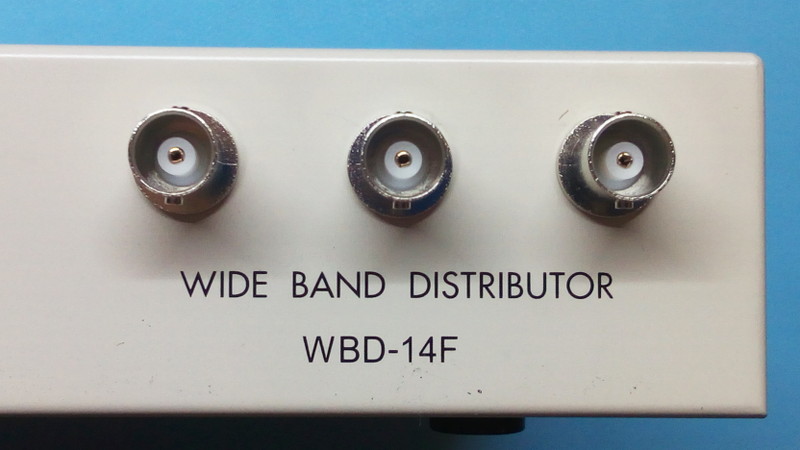 The BNCs installed on the front panel. OCD types among you will notice that the one on the right is a tiny bit higher than the two others. This was easily fixed by filing the hole a little on it's lower edge. If you noticed congratulations: the difference is only 0.2mm :-) I used front-mounted BNCs because they were cheaper but I recommend using back-mounted ones to make your cabling life a lot easier. Speaking of cables I used RG-316 for these short internal cables; RG-58 would be a tad overkill I think. And harder to solder on the PCB. The inner bit of the connectors after connecting the cables looks like this: 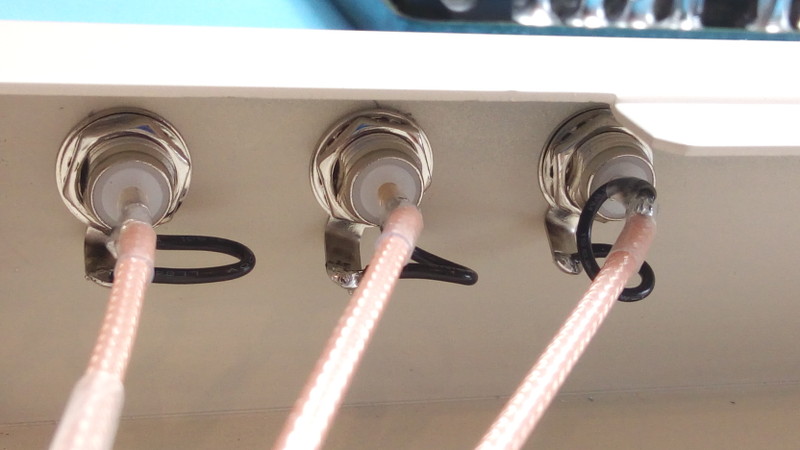 Inside the front panel, showing the BNCs and their cables Using heat-shrink tubing to reinforce the cable-connector mechanical linkage is strongly recommended. My tubes are transparent: nothing to hide! The other end of the cables can be conveniently soldered to each "monitor relay". Given the rigidity of RG316 cables it's a good idea to have the right length for each individual cable. The cables are pressing lightly on the inner wall of the device, and this pressure is applied to the shield connection (mechanical strength). For this to work the shield wired must be placed on the left of the relay pin on the image below. This way the gentle pressure is applied to the entire relay, not the solder joint of (worse) the cable's signal core conductor joint.  The other end of the coax cable is attached to the relay pins The ground pin of the relay coil is conveniently placed about 5mm away from the signal pin we wish to tap into, leaving enough space for the cable insulator: 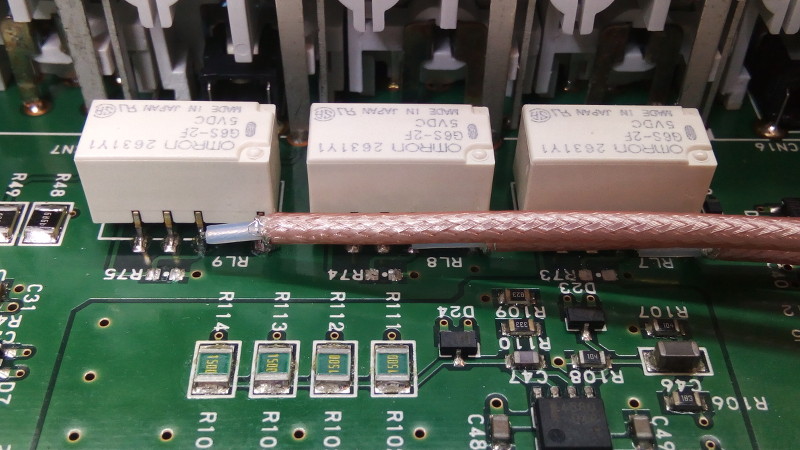 Alternate view of the cable-PCB interface After some testing we can close the distributor and put it back in the rack. But before that a quick shot of an inline fuse I added in a mains line. Why? Well, this unit has zero fuses! Not on the back panel, not hidden inside, not on the PCB. If you pick up an Imagenics WBD-14F I strongly recommend you add that 2.5 euro improvement! 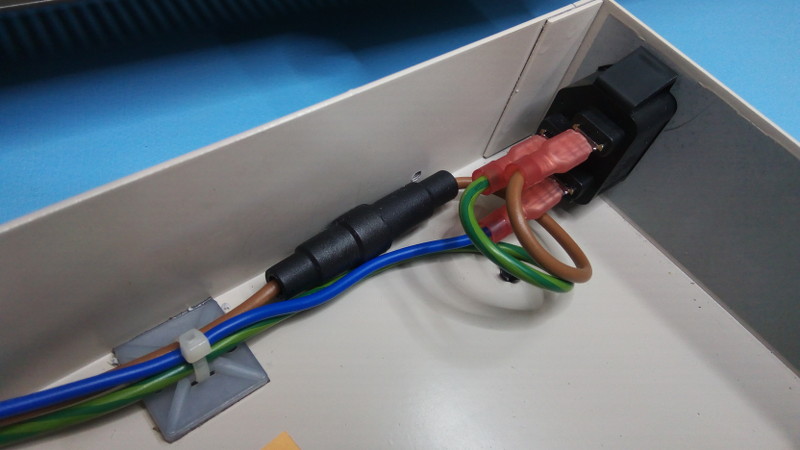 A fuse, a must! Digikey part number 01500274ZXU-ND 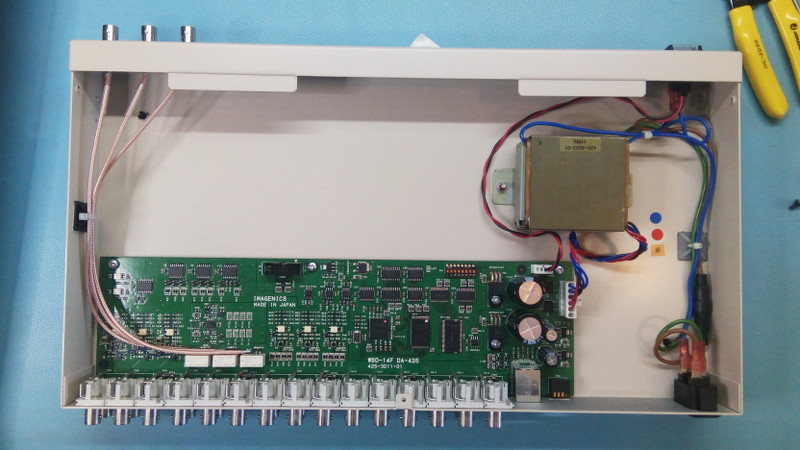 Full inside view before closing.  10.0000000000 MHz or nothing! | |
| © 2024 Damien Douxchamps. All rights reserved. | |

